
How to Use Logic_level_converter: Examples, Pinouts, and Specs
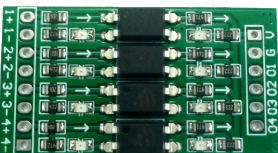
 Design with Logic_level_converter in Cirkit Designer
Design with Logic_level_converter in Cirkit DesignerIntroduction
A Logic Level Converter is an essential device used to safely step down or step up voltage levels between different parts of a circuit. This allows components with different voltage requirements to communicate effectively. Logic level converters are commonly used in projects involving microcontrollers, sensors, and other digital devices that operate at different voltage levels.
Explore Projects Built with Logic_level_converter
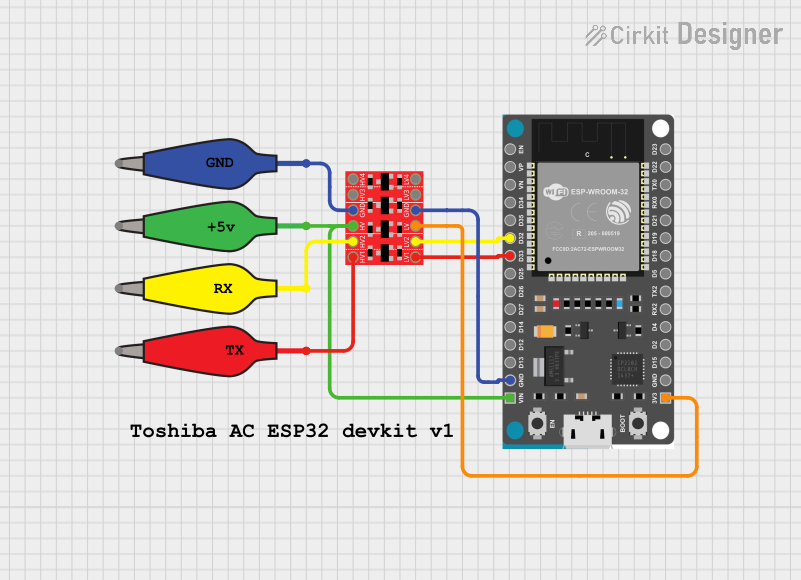
 Open Project in Cirkit Designer
Open Project in Cirkit Designer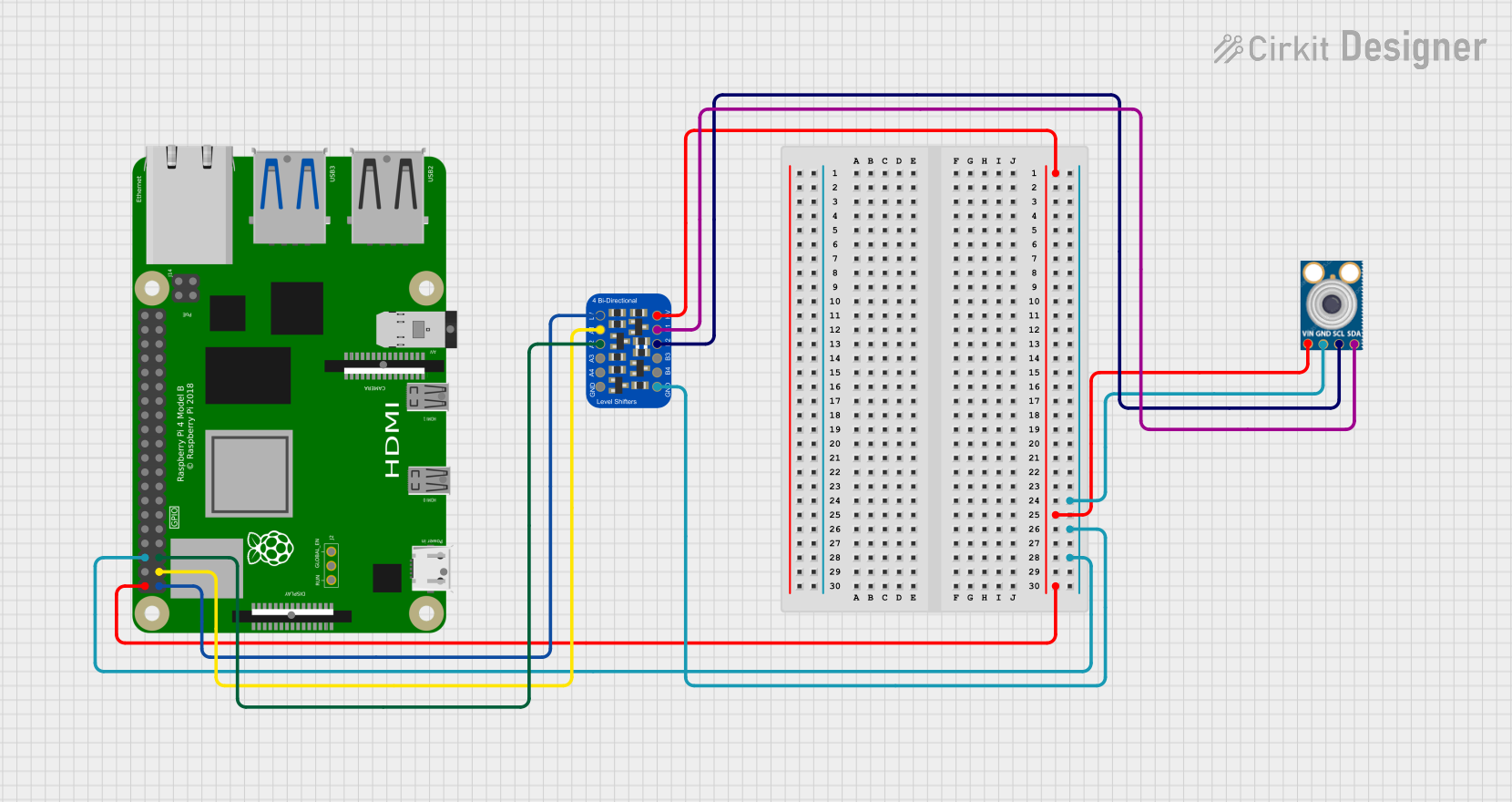
 Open Project in Cirkit Designer
Open Project in Cirkit Designer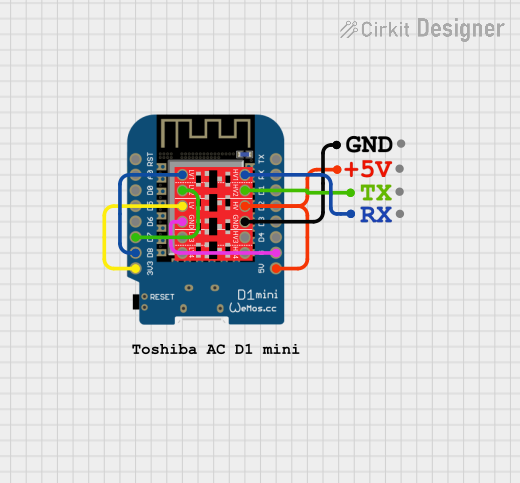
 Open Project in Cirkit Designer
Open Project in Cirkit Designer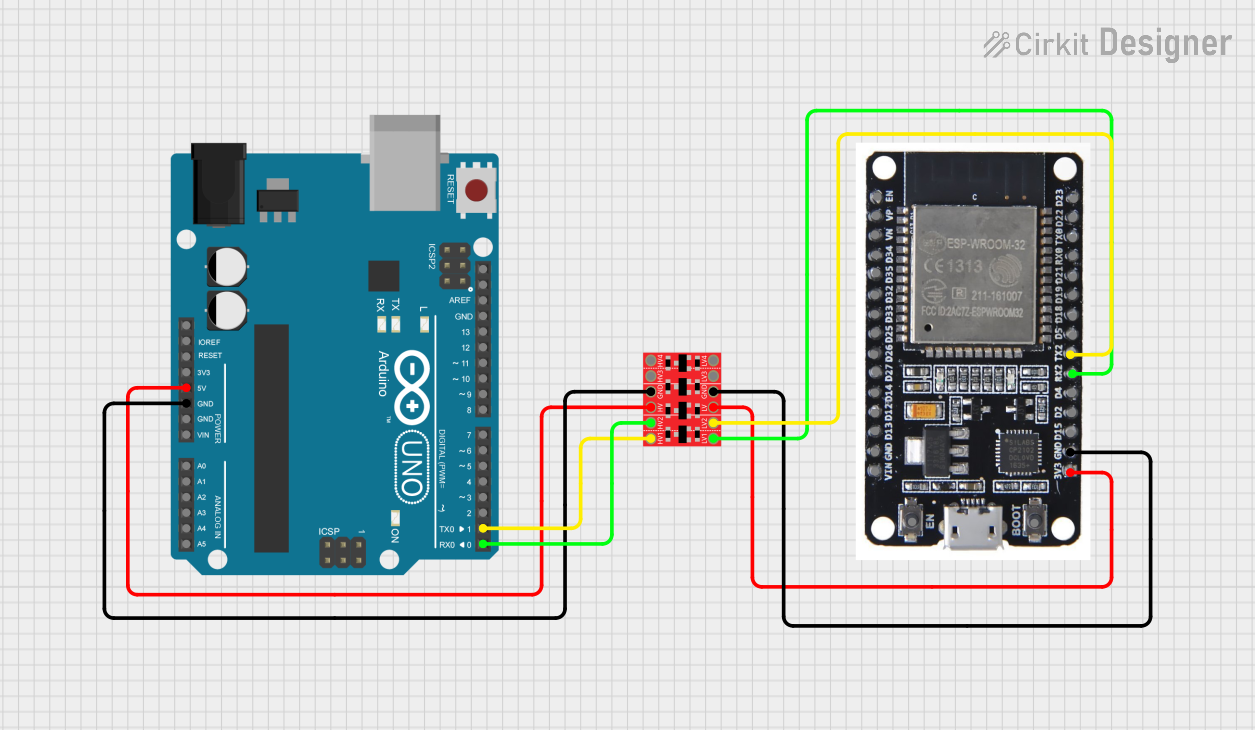
 Open Project in Cirkit Designer
Open Project in Cirkit DesignerExplore Projects Built with Logic_level_converter

 Open Project in Cirkit Designer
Open Project in Cirkit Designer
 Open Project in Cirkit Designer
Open Project in Cirkit Designer
 Open Project in Cirkit Designer
Open Project in Cirkit Designer
 Open Project in Cirkit Designer
Open Project in Cirkit DesignerCommon Applications and Use Cases
- Microcontroller Interfacing: Connecting 3.3V sensors to 5V microcontrollers (e.g., Arduino UNO).
- Communication Protocols: Bridging voltage gaps in I2C, SPI, UART, and other communication protocols.
- Mixed Voltage Systems: Integrating components with different operating voltages in a single system.
Technical Specifications
Key Technical Details
| Parameter | Value |
|---|---|
| Operating Voltage | 1.8V to 5V |
| Maximum Current | 150mA |
| Power Rating | 0.75W |
| Conversion Types | Bidirectional |
| Channels | 4 or 8 (depending on model) |
Pin Configuration and Descriptions
4-Channel Logic Level Converter
| Pin | Name | Description |
|---|---|---|
| 1 | HV | High Voltage (e.g., 5V) |
| 2 | LV | Low Voltage (e.g., 3.3V) |
| 3 | GND | Ground |
| 4 | HV1 | High Voltage Channel 1 |
| 5 | LV1 | Low Voltage Channel 1 |
| 6 | HV2 | High Voltage Channel 2 |
| 7 | LV2 | Low Voltage Channel 2 |
| 8 | HV3 | High Voltage Channel 3 |
| 9 | LV3 | Low Voltage Channel 3 |
| 10 | HV4 | High Voltage Channel 4 |
| 11 | LV4 | Low Voltage Channel 4 |
Usage Instructions
How to Use the Component in a Circuit
Power Connections:
- Connect the
HVpin to the high voltage supply (e.g., 5V). - Connect the
LVpin to the low voltage supply (e.g., 3.3V). - Connect the
GNDpin to the ground of the circuit.
- Connect the
Signal Connections:
- Connect the high voltage signal to the corresponding
HVxpin. - Connect the low voltage signal to the corresponding
LVxpin.
- Connect the high voltage signal to the corresponding
Example Circuit with Arduino UNO
**Components Needed:**
- Arduino UNO (5V logic)
- 3.3V sensor (e.g., BMP180)
- Logic Level Converter
- Jumper wires
- Breadboard
**Connections:**
1. Connect `HV` to Arduino 5V.
2. Connect `LV` to sensor 3.3V.
3. Connect `GND` to common ground.
4. Connect `HV1` to Arduino SDA (A4).
5. Connect `LV1` to sensor SDA.
6. Connect `HV2` to Arduino SCL (A5).
7. Connect `LV2` to sensor SCL.
Important Considerations and Best Practices
- Voltage Matching: Ensure that the
HVandLVpins are connected to the correct voltage levels. - Common Ground: Always connect the ground of the logic level converter to the ground of the circuit.
- Current Limitation: Do not exceed the maximum current rating of 150mA per channel.
- Bidirectional Use: The converter can handle bidirectional signals, making it suitable for I2C communication.
Troubleshooting and FAQs
Common Issues Users Might Face
No Signal Conversion:
- Solution: Check the power connections to
HVandLV. Ensure they are connected to the correct voltage levels.
- Solution: Check the power connections to
Intermittent Communication:
- Solution: Verify that the ground connections are secure and common across all components.
Overheating:
- Solution: Ensure that the current through each channel does not exceed 150mA. Check for short circuits.
FAQs
Q1: Can I use the logic level converter for analog signals?
- A1: No, logic level converters are designed for digital signals only.
Q2: How many channels can I use simultaneously?
- A2: You can use all available channels (4 or 8) simultaneously, provided you do not exceed the current rating.
Q3: Can I use the converter with a 1.8V device?
- A3: Yes, the converter supports voltage levels as low as 1.8V.
Example Code for Arduino UNO
#include <Wire.h>
#include <Adafruit_BMP085.h>
Adafruit_BMP085 bmp;
void setup() {
Serial.begin(9600);
Wire.begin(); // Initialize I2C communication
if (!bmp.begin()) {
Serial.println("Could not find a valid BMP085 sensor, check wiring!");
while (1) {}
}
}
void loop() {
Serial.print("Temperature = ");
Serial.print(bmp.readTemperature());
Serial.println(" *C");
Serial.print("Pressure = ");
Serial.print(bmp.readPressure());
Serial.println(" Pa");
delay(2000); // Wait for 2 seconds before next reading
}
This code initializes the BMP085 sensor and reads temperature and pressure values, displaying them on the serial monitor. Ensure the sensor is connected through the logic level converter as described in the example circuit.
This documentation provides a comprehensive guide to understanding, using, and troubleshooting a logic level converter. Whether you are a beginner or an experienced user, this guide aims to help you integrate this component effectively into your projects.